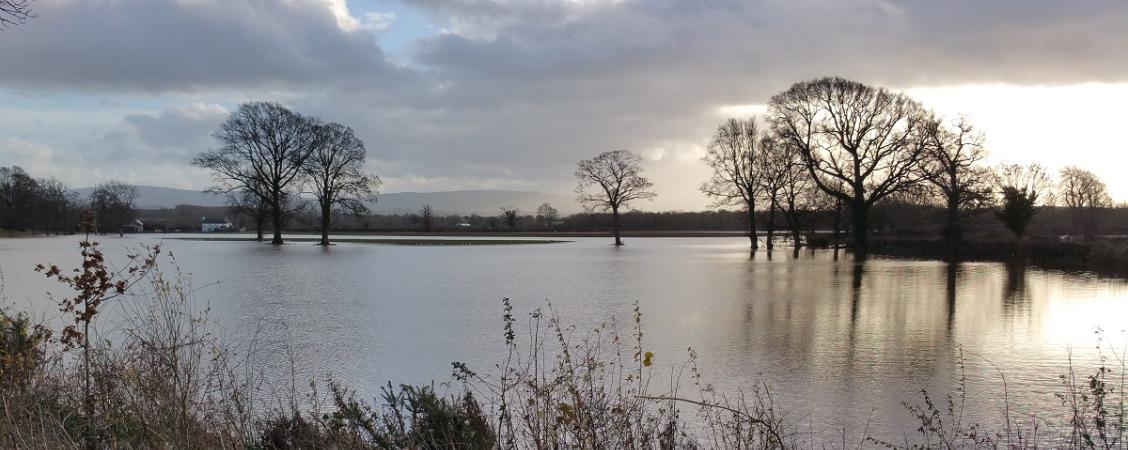
National Flood Resilience Review Published
The UK Government’s much-anticipated review of National Flood Resilience has been published with a commitment to providing vulnerable communities with more temporary defences, a new approach to fluvial and coastal flood risk modelling and better protection of key infrastructure.
Prompted by the lessons learned from the floods of the winter of 2015-2016, the review focuses on the risks and resilience to fluvial and coastal flooding in particular. The report repeats the Government’s commitment to a separate 2017 review of planning regulations and sustainable drainage in relation to England.
The comprehensive 145-page report from the Department of Environment, Food and Rural Affairs (Defra) stresses the scientific advice sought to reach the report’s recommendations and outlines the Government’s next steps.
Sir Mark Walport, the Government Chief Scientific Adviser, said: “It is important that policy on flood risk is underpinned by credible and objective scientific evidence and analysis. This review used new modelling techniques to challenge our ideas around the frequency and location of extreme flooding.
“We were able to model what level of rainfall would be worse than anything that we have experienced but still possible for our climate. This information enabled us to look again at how bad coastal and river flooding could be under such extreme conditions to ensure we are better prepared. This work was overseen by an expert group brought together from across industry and academia.”
Local resilience protection
As part of the review, the Government worked with the UK water companies and other key infrastructure organisations to review flood risks, and the report commits to increased resilience both to provide improved temporary response protection in the short-term as well as permanent measures for the longer term.
The review pledges £12.5 million for new temporary defences, such as barriers and high volume pumps, at seven strategic locations around England. By this winter, the Environment Agency will have four times more temporary barriers than last year, the report promises.
Sheffield Pilot Project
During the review the Government “identified a clear need to think more strategically about how we plan the defence of our cities from fluvial and coastal flooding,” says the report. “It is clear we must consider more creative solutions to deliver new flood defences without significant additional burden being placed on the taxpayer.”
A pilot scheme will pave the way for a Core Cities approach to building resilience into the design of urban development and regeneration. A group of industry leaders and experts will be established to advise and work with the City of Sheffield.
“The group will focus specifically on how we can design new defences which will deliver, and be financed from the proceeds of, economic value for the local area. We will be working with Sheffield to enable the city to identify development of a type that will beautify the city-scape, unlock opportunities for urban regeneration and fit with local development priorities,” says the report. The work will include looking at international examples of flood defence schemes, such as in the Netherlands, where significant economic value has been developed.
Flood risk modelling improvements
The review promises “a new stress test” of the risk of flooding from rivers and the sea in England. It commits to developing a more integrated flood risk modelling approach to allow simulations which link meteorology, hydrology and flooding across England. For the first time, Met Office forecasts of extreme rainfall scenarios will be linked with Environment Agency modelling to provide a new assessment of flood risk.
Surface Water
The report also outlines a change to National Risk Assessment. The 2016 National Risk Assessment will include separate fluvial and surface water flood risks in place of a single ‘inland flood’ risk. This recognises the different characteristics of surface water flooding and river flooding, which will allow a more targeted approach to planning for and managing the risk of surface water flooding at both the national and local level.
Sustainable Drainage
As previously committed by the Government as part of the Housing and Planning Act 2016, the review repeats the promise of “a review of planning legislation, government planning policy and local planning policies concerning sustainable drainage in relation to the development of land in England, as set out in the Housing and Planning Act 2016.”
“This review will make a constructive contribution to the work of the Adaptation Sub-Committee of the Committee on Climate Change and inform their 2017 progress update on the National Adaptation Plan,” it says.
With the evidence of the National Flood Resilience Review, the Government says it will now turn its attention to investment after 2021, making sure funds are directed where they are needed most. Defra says this builds on the £2.5 billion already being invested between 2015 and 2021 to strengthen our flood and coastal defences, as well as spending £1 billion on maintaining the nation’s flood defences over this Parliament.
Following the National Flood Resilience Review, the Government is launching four new projects to develop, test and accelerate new ways of managing the environment; this will include a project in Cumbria, which focuses on natural flood management strategies and up-to-date modelling and data tools.
The full review can be downloaded via the Government website here https://www.gov.uk/government/publications/national-flood-resilience-review.
